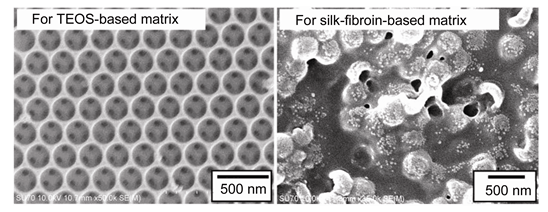| [1] Whitesides, G. M.; Grzybowski, B. Science 2002, 295, 2418.
[2] Zhao, X.; Su, F.; Yan, Q.; Guo, W.; Bao, X. Y.; Lv, L.; Zhou, Z. J. Mater. Chem. 2006, 16, 637.
[3] Holland, B. T.; Blanford, C. F.; Stein, A. Science 1998, 281, 538.
[4] Arsenault, A. C.; Clark, T. J.; von Freymann, G.; Cademartiri, L.; Sapienza, R.; Bertolotti, J.; Vekris, E.; Wong, S.; Kitaev, V.; Manners, I. Nat. Mater. 2006, 5, 179.
[5] Rinne, S. A.; García-Santamaría, F.; Braun, P. V. Nat. Photonics 2008, 2, 52.
[6] Choi, S. W.; Xie, J.; Xia, Y. Adv. Mater. 2009, 21, 2997.
[7] Lee, K.; Asher, S. A. J. Am. Chem. Soc. 2000, 122, 9534.
[8] Li, Y.; Qi, L.-M. Acta Chim. Sinica 2015, 73, 869. (李扬; 齐利民, 化学学报, 2015, 73, 869.)
[9] Hatton, B.; Mishchenko, L.; Davis, S.; Sandhage, K. H.; Aizenberg, J. Proc. Natl. Acad. Sci. U. S. A. 2010, 107, 10354.
[10] Lytle, J. C.; Stein, A. Annual Review of Nano Research, Vol. 1, Eds.:Cao, G. Z.; Brinker, C. J., World Scientific Publishing Co., Singa-pore, 2006, 1, pp. 1~14.
[11] Velev, O. D.; Lenhoff, A. M. Curr. Opin. Colloid. Interface Sci. 2000, 5, 56.
[12] Jiang, F.-G.; Yao, J.-R.; Chen, X.; Shao, Z.-Z. Acta Chim. Sinica 2009, 67, 1675. (蒋伏广, 姚晋荣, 陈新, 邵正中, 化学学报, 2009, 67, 1675.)
[13] Tu, H.; Yu, R.; Lin, Z.; Zhang, L.; Lin, N.; Yu, W. D.; Liu, X. Y. Adv. Funct. Mater. 2016, 26, 9032.
[14] Ke, G.-Z.; Xie, H.-F.; Ruan, R.-P.; Yu, W.-D. Energy Convers. Manage. 2010, 51, 2294.
[15] Liu, R.; Wan, L.; Liu, S.; Pan, L.; Wu, D.; Zhao, D. Adv. Funct. Mater. 2015, 25, 526.
[16] Chen, Z.; Zhang, H.; Lin, Z.; Lin, Y.; van Esch, J. H.; Liu, X. Y. Adv. Funct. Mater. 2016, 26, 8978.
[17] Nagarkar, S.; Nicolai, T.; Chassenieux, C.; Lele, A. Phys. Chem. Chem. Phys. 2010, 12, 3834.
[18] Cao, H.; Chen, X.; Shao, Z.-Z. Acta Chim. Sinica 2008, 66, 2059. (曹惠, 陈新, 邵正中, 化学学报, 2008, 66, 2059.)
[19] Schroden, R. C.; Al-Daous, M.; Blanford, C. F.; Stein, A. Chem. Mater. 2002, 14, 3305.
[20] Diao, Y. Y.; Liu, X. Y.; Toh, G. W.; Shi, L.; Zi, J. Adv. Funct. Mater. 2013, 23, 5373.
[21] Wong, S.; Kitaev, V.; Ozin, G. A. J. Am. Chem. Soc. 2003, 125, 15589.
[22] Zhou, Z.; Zhao, X. Langmuir 2005, 21, 4717.
[23] Zhang, T. H.; Kuipers, B. W.; Groenewold, J.; Kegel, W. K. Soft Matter. 2015, 11, 297.
[24] Zhang, T. H.; Liu, X. Y. Chem. Soc. Rev. 2014, 43, 2324.
[25] Chabanov, A. A.; Jun, Y.; Norris, D. J. Appl. Phys. Lett. 2004, 84, 3573.
[26] Huang, Y.; Zhou, J.; Su, B.; Shi, L.; Jiang, L. J. Am. Chem. Soc. 2012, 134, 17053.
[27] Busch, K.; John, S. Phys. Rev. E 1998, 58, 3896. |
